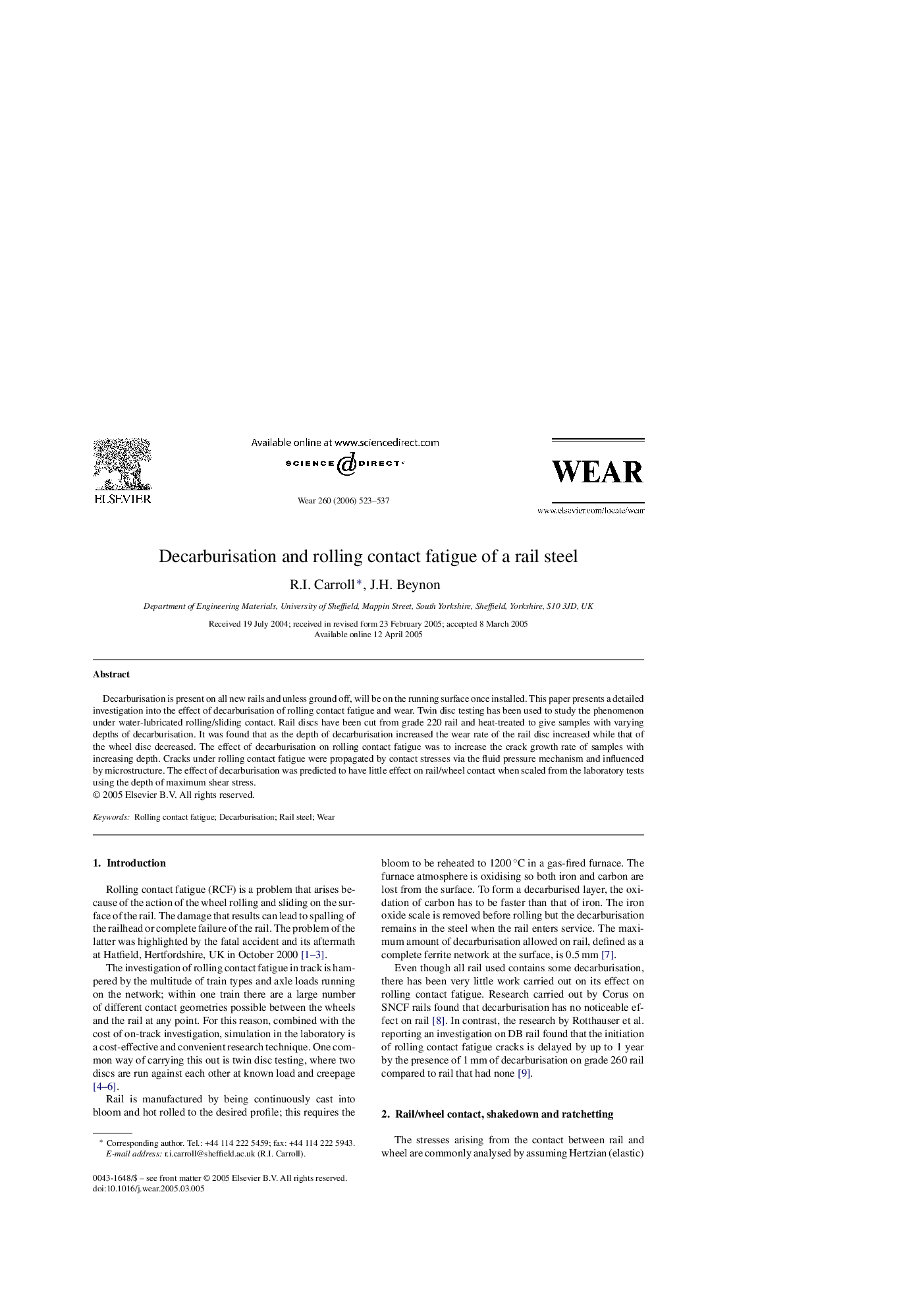| Article ID | Journal | Published Year | Pages | File Type |
|---|---|---|---|---|
| 619785 | Wear | 2006 | 15 Pages |
Decarburisation is present on all new rails and unless ground off, will be on the running surface once installed. This paper presents a detailed investigation into the effect of decarburisation of rolling contact fatigue and wear. Twin disc testing has been used to study the phenomenon under water-lubricated rolling/sliding contact. Rail discs have been cut from grade 220 rail and heat-treated to give samples with varying depths of decarburisation. It was found that as the depth of decarburisation increased the wear rate of the rail disc increased while that of the wheel disc decreased. The effect of decarburisation on rolling contact fatigue was to increase the crack growth rate of samples with increasing depth. Cracks under rolling contact fatigue were propagated by contact stresses via the fluid pressure mechanism and influenced by microstructure. The effect of decarburisation was predicted to have little effect on rail/wheel contact when scaled from the laboratory tests using the depth of maximum shear stress.
